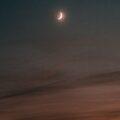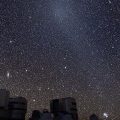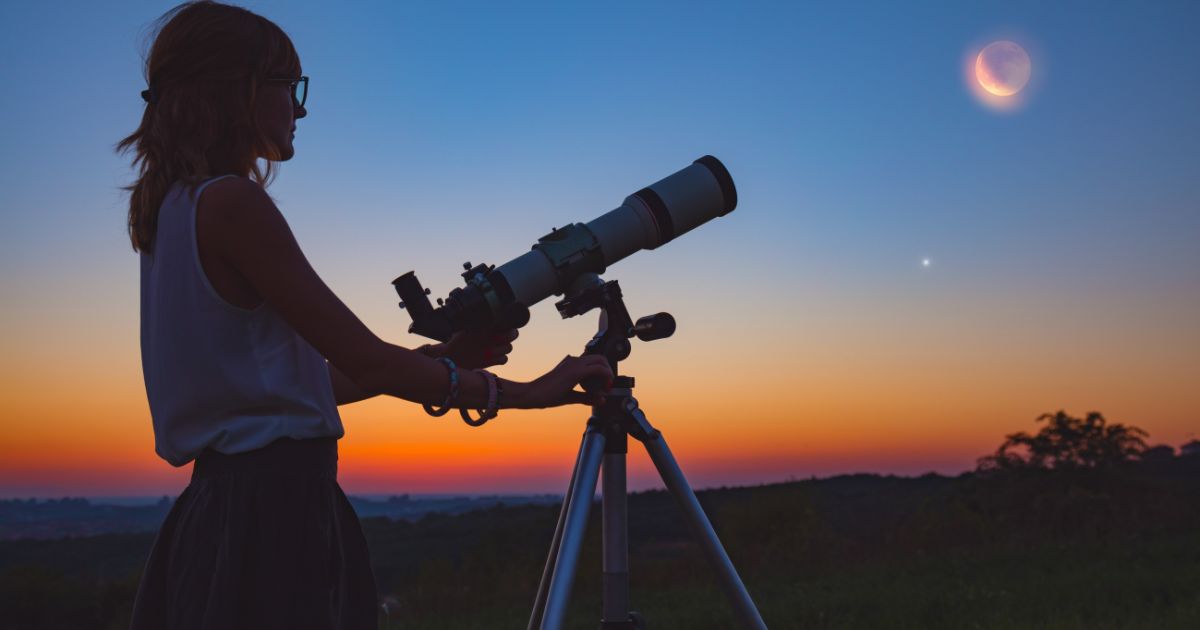For guidance on reading the tables for beginners – please go here
Don’t forget to turn your clocks forward one hour on the night of March 9-10 to be ready for Daylight Saving Time on the Sunday morning.
The evenings begin moonless, so take advantage of this by looking for some of the fainter constellations. Begin with the most obvious ones. Above the eastern horizon is Leo the lion. Its head and main of hair is delineated by stars that form a backward “?” with the star Regulus making the “dot”. Just above the horizon to the left is the faint grouping of stars at the centre of the constellation Coma Berenices. It is an expansive association of stars 280 light-years away from us that will overflow your binocular field.
On the 24th, Mercury will highest above the horizon as the sky darkens. This is called its maximum “eastern elongation”. After twilight, it can be seen about 5 degrees above the western horizon. During this night there will also be a slight lunar eclipse. Many observers may not notice the dimming of the Moon.
NOTABLE EVENTS
Mar 3 Last Quarter Moon 10:23
Mar 6 A good week to look out for the zodical light un the west under a dark sky.
Mar 10 Daylight Saving Time begins at 2am, New Moon 05:00
Mar 11 Sun enters Pisces
Mar 17 First Quarter Moon 00:11
Mar 19 Spring Equinox 23:06
Mar 24 Mercury at maximum evening Elongation
Mar 25 Full Moon 03:00, LUNAR ECLIPSE
ECLIPSES:
This is a great year for eclipses with a faint and prominent lunar pair, and a memorable solar eclipse. The solar eclipse will be visible over most of North America, but only a small portion will see the total eclipse spectacle. The rest of the continent will see only a portion of the. Sun covered by the Moon. Therefore we will leave a more detailed discussion for another article in this chapter.
We list Ottawa times (Daylight Saving) to align with the general practice of referencing events to the Nation’s capital.
The first lunar eclipse on the early morning of March 25 is the full Moon that preceeds the solar eclipse about two weeks later. It skirts the Moon – not making it into the dark umbral shaddow. If we were to stand on the Moon during this eclipse, we would still see a portion of the Sun shining beyond the dark disk of the Earth. This is called a penubral eclipse and it may only be noticeble with careful study. Visit www.timeanddate.com/eclipse/lunar/2024-march-25 for more information and diagrams.
The September 17-18 lunar eclipse will be be more evident, but it will still need careful observations. The lunar eclipse will not be as prominent as those in previous years. The Moon will only graze the dark umbra with a 3.5% coverage during mid eclipse. Visit www.timeanddate.com/eclipse/lunar/2024-september-18 for more information and diagrams.
Since lunar eclipses are visible from anywhere the Moon is above the horizon, you only need to correct the times for the difference of your time zone from EDT. Then you need to hope for clear skies.

Dates for the Phases of the Moon

Entries are in Eastern Time and only require time zone correction. Do not use the correction from the “Ottawa-Time” table. Saskatchewan and parts of BC and Ontario do not use daylight savings. In these regions, subtract 1-hour from these times from March 10 to November 3.
Planetary Configurations
When at Opposition, planets will appear on the opposite side of the sky from the Sun – very roughly on the meridian at midnight. Conjunctions are when the planet has the same “longitude” as the Sun. A Superior Conjunction is when the planet is on the other side of the Sun, and an Inferior Conjunction is when it is between the Earth and the Sun. Only Mercury and Venus can be at Inferior Conjunction. Maximum elongation is when Mercury and Venus appear farthest from the Sun in our sky. This occurs either in our morning eastern sky (mor.) or our western evening sky (eve.). Do not apply the Ottawa-correction times to the times in this table.

Prominent Constellations by Seasons


Brightest Stars

One of Canada’s foremost writers and educators on astronomical topics, the Almanac has benefited from Robert’s expertise since its inception. Robert is passionate about reducing light pollution and promoting science literacy. He has been an astronomy instructor for our astronauts and he ensures that our section on sunrise and sunset, stargazing, and celestial events is so detailed and extensive it is almost like its own almanac.












